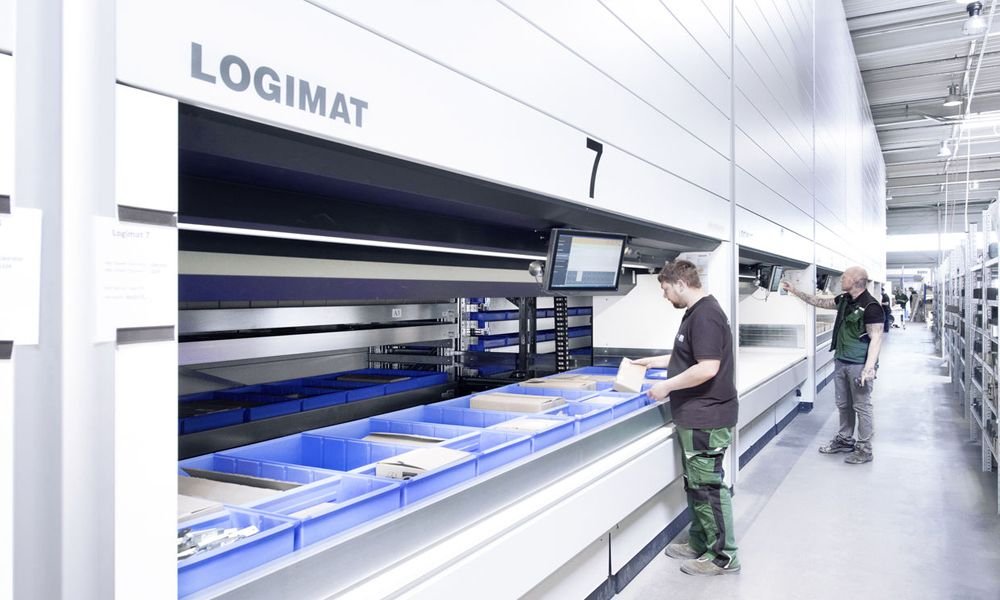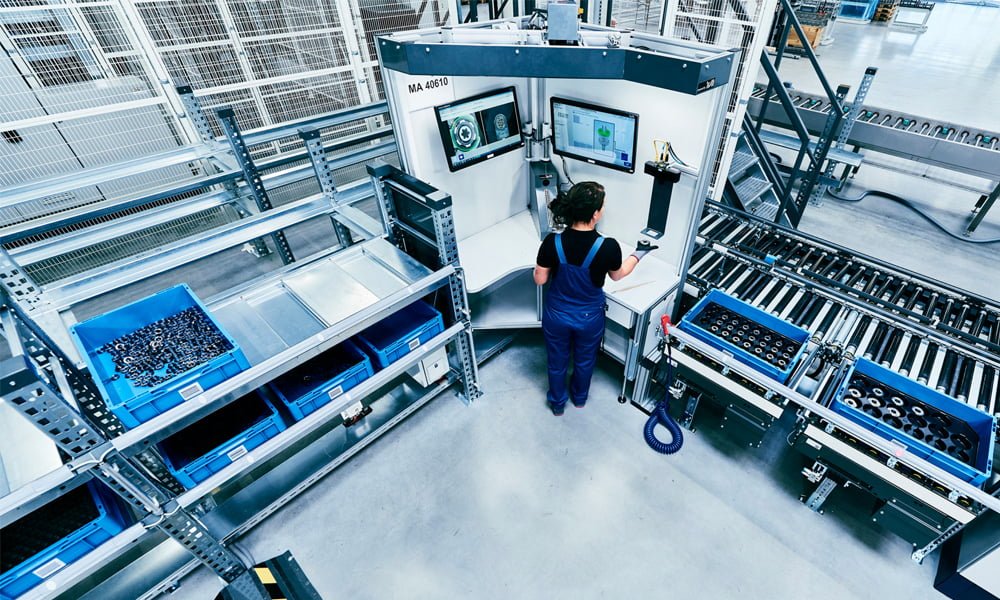Best product 2021 prize goes to KNAPP AG for at the LogiMAT for its ivii.smartdesk. It is an intelligent work station that digitalizes manual processes.
ivii.smartdesk work involves a zero error strategy and a 100 percent quality check for production as well as goods-in and goods-out. Moreover, the ivii.smartdesk is a great solution when it comes to the shortage of qualified personnel as it digitalizes expert knowledge.
A real-time feedback system is integrated into the ivii.smartdesk and monitors every work step. This provides a zero error strategy and end-to-end traceability for the assembly process.
Equipped with an image recognition and image processing system, the ivii.smartdesk is used in production as an assembly work station. All assembly work is supported by software.
Image processing and image recognition and technologies
The image recognition and image processing system records all the components required for assembly. Each work step is checked and validated. The next work step is only possible when the image processing system has confirmed the previous one as “OK”. This way, all components are assembled in the right sequence and quality. Thanks to the real-time feedback system, employees immediately receive feedback on the quality of the work step.
Monitors provide an optimal overview of the work in progress at the assembly work station. While one of the monitors displays the theoretical status of a product, the other monitor displays the actual camera image.
The various components need to be assembled so that the theoretical and actual images match each other. As soon as the assembly process has been completed, the employee presses a button to begin the final check by the feedback system.
One of the monitors shows the result to the employee. Green means that everything is OK, while red indicates that an error has occurred. The possible error is displayed on the monitor and can be corrected immediately by the employee. This is how error-free production becomes a reality.
Quality check at maximum
In the goods-in area, the ivii.smartdesk is used to check whether all the goods have been delivered to the warehouse in the correct quantities and quality. The delivery is documented and saved for the burden of proof later on. This not only saves time, but also lowers complaint costs.
In the goods-out area, the ivii.desk is used to check whether the right products are in the right container in the right quantity and quality. This application is perfectly suited for OEM suppliers in the automotive sector as the requirements in this industry are particularly high.
Focusing on people
The ivii.smartdesk supports people in their daily work. Employees work confidently, knowing that they are not making errors that are a hassle to correct later on. At the same time, the playful approach to the work steps – gamification – motivates employees, helping to establish a learning organization and increased employee satisfaction.
No need for barcodes to recognize items
The ivii.smartdesk recognizes items within split seconds without a conventional means of identification such as barcodes.
The ivii.smartdesk simply compares the item on the desk to data it has on characteristics for that article. Consequently, lengthy searches in catalogues are eliminated in both the goods-in and goods-out areas.
With the article number being displayed, the employee can rapidly and correctly match the articles. A helpful feature is that employees can teach the system new articles.





